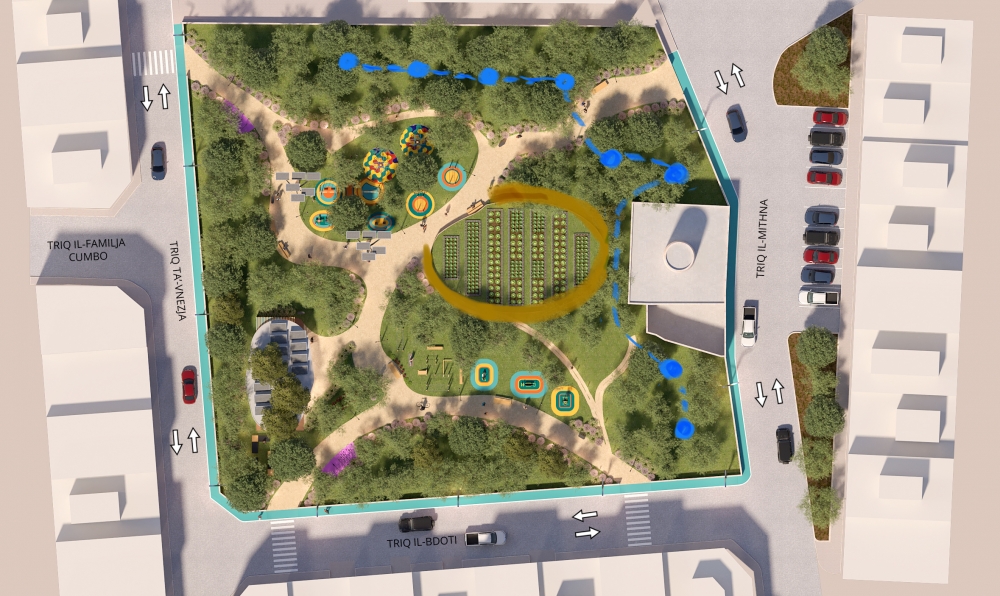Architects proposed ‘natural’ design that retained olive trees for Mosta garden
A design submitted for the Greenserv urban greening projects proposed a more natural look for the Mosta Ċikku Fenech garden

An alternative design submitted for an urban greening competition, proposed retaining more trees for the new Mosta garden that will replace a derelict field once tended by farmer Ċikku Fenech.
Architectural designers Nidum and Halmann Vella proposed a design with minimal impact on the field of over 100 mature olive trees, to instead make certain pockets of the field more accessible.
The design proposes a wide walkway that connects perpendicular streets, and integrates playground infrastructure into the dense foliage of the field.
It is a remarkable contrast to the formalised, paved render of the public garden that is being proposed by Greenserve, the government’s urban greening agency.
“Our scope was twofold: to minimize any impact on the existing grove, and instead enhance the sites’ biodiversity using local flora and fauna, while making small pockets below the olives more accessible,” Nidum said on their Facebook page. “The grove, remaining untouched, becomes the heart of a new public space that instead extends across the road to create a wider public realm.”
The garden would be turned into ‘an outdoor museum of botanical sciences’, as an incubator of local biodiversity, while being encircled by public space that prioritises pedestrians, cyclists and public transport users, to guarantee slow, leisurely mobility on a neighbourhood scale.
Nidum said their proposal was a way of making public spaces sustainable, resilient, but “as variable as nature itself, capable of accommodating the new dynamics of changing exigencies of future generations.”

The environment ministry however has declared that none of the existing trees will be uprooted or removed from the field with its proposed design.
“None of the existing trees will be uprooted or removed unless they are an invasive species,” the spokesperson said, adding that the project’s layout will adapt to the current configuration and location of trees. “The landscape design process would take a conservative approach that is entirely environmentally friendly,” a spokesperson said.
Over 40% of the proposed material for the garden’s construction will be re-used or recyclable material and the integration of renewable energy. “The project will move away from concrete and utilise more natural materials, such as wood and paths made of a natural ground stabilised material, soil, gravel, and other aggregates. It will include a communal garden for children to try their hands and cultivating crops.”
The project is eligible for an official Carbon Footprint certification which is internationally recognised for its general characteristics, both for materials and infrastructure. “The government is therefore securing a site earmarked for a high-density residential development to maintain it as a green lung for recreational use through the project,” the spokesperson said.
Three sites in Qormi, Ħamrun and Mosta were earmarked for a €3 million urban greening project, with the winning designs to be selected following a public call. The initiative is piloted by the environment ministry in collaboration with the Kamra tal-Periti, while the funds are being allocated from the proceeds received from the sale of passports, the NSDP.
Nidum said that the contest was an opportunity to demonstrate how urban planning can be redirected away from the creation of solid forms and instead to prioritise “empty” ones and turn them into usable ‘natural’ spaces: “A new paradigm, where gardens and green environments are simultaneously enjoyable, but also able to safeguard and promote the biodiversity of nature within our towns.”
A Facebook poll by MaltaToday also found that practically four in five respondents were not at all pleased by the design selected for the Mosta garden, and instead preferred a more natural look.






.jpg)















